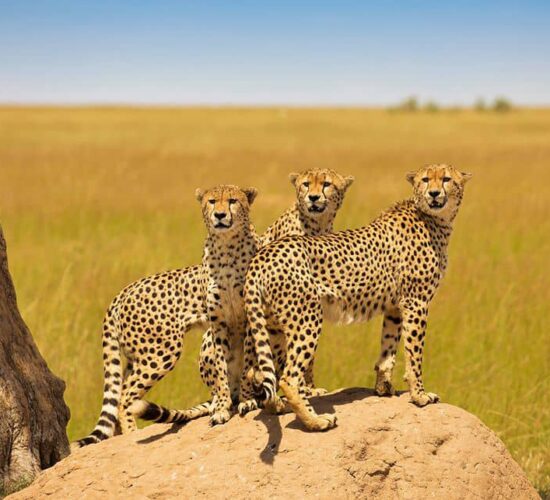Planning ahead makes it more likely that you’ll get bookings at the lodges you want (they fill up during high season), but can be scary, since it involves a certain leap of faith in the company’s honesty and competence. Showing up in Arusha and looking allows you to check out the company more thoroughly, but it may take a while. The town itself is unpleasantly touristy, and you’ll have to sort through a lot of competing offers of dubious quality. Start by deciding what kind of safari you want ; make a list of the parks you want to visit; and decided on staying in lodges or Camps. You may want lodges for two reasons; they are more comfortable beds and air conditioning. The beds are fine, but in early August, air conditioning turns out to unnecessary; from that point of view, camping will not be a problem. Otherwise, the decision rests on your budget and your preference in ambience. The price difference between the two is about $35 per person per day, $125 in lodges versus $90 camping. The lodges are, for the most part, large, luxury, or semi-luxury hotels, with grand buffet meals in cavernous restaurants and fleets of staff to carry your luggage for you. The campsites are campsites, with very basic plumbing facilities and no fences around them, so that, in principle, lions can wander into your camp at night. Whether you go lodges or camping, food is provided. Vegetarian food is no problem in the lodges. Kosher food should be OK too, depending on how strict you are; you can go veggie if you want to be on the safe side. Once you have decided what you want , choosing a safari company turns out to be surprisingly easy. Check guide books for listings of companies in the low- to mid-range budget, and check out their web pages. Email the companies with descriptions of what you want , and decide on a custom made itinerary. Whatever you choose, you’ll absolutely have to have a Land-Cruiser , four-wheel vehicle, and a guide to enter all the National Parks including Ngorongoro and Serengeti National Parks. Prices may be negotiable, but only up to a point, as there’s a large park entry fee (up to $50 per person per day). So that’s the practical order of how you choose your safari. But the other thing that matters most, the thing that provides you with the questions to ask your safari company, is the choice of itinerary. There are a number of parks in the area of Arusha, each with a different character. In the course of a five-day safari, you can go to Tarangire, Serengeti, Ngorongoro Crater, and Lake Manyara; this is a pretty intense travel schedule, as the distances between the parks take a while to cover. Most tour companies will suggest that you do something similar, a sort of tasting menu of the parks, but if you want a more leisurely pace, it’s perfectly possible, and you can choose to have longer stopovers, which would allow you to spend one morning looking at the vista in a lodge or several hours watching the same group of animals (lions hunting, for example). Each park has its own specialty. Tarangire is a plains ecosystem around a permanent river, and is supposed to be good for elephants. The Serengeti is a vast, vast plain teeming with pretty much every .
![AFB_IMG_1637412568458[1964]](https://amkaafrika.com/wp-content/uploads/2022/04/AFB_IMG_16374125684581964-550x500.jpg)
